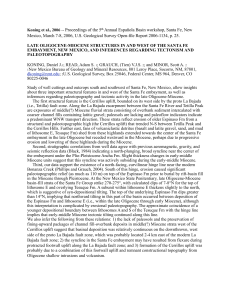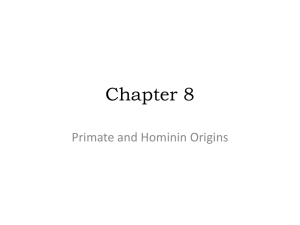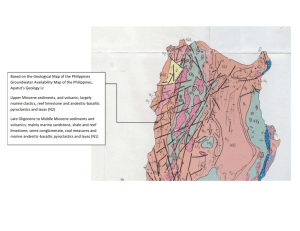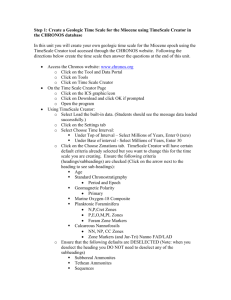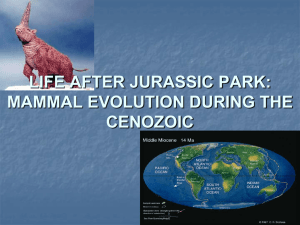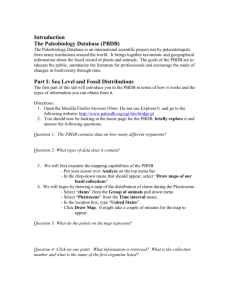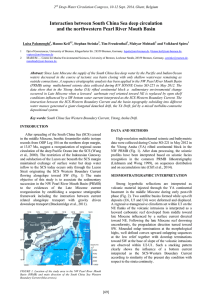oreodonts - EEOS260-f12-Poynton
advertisement
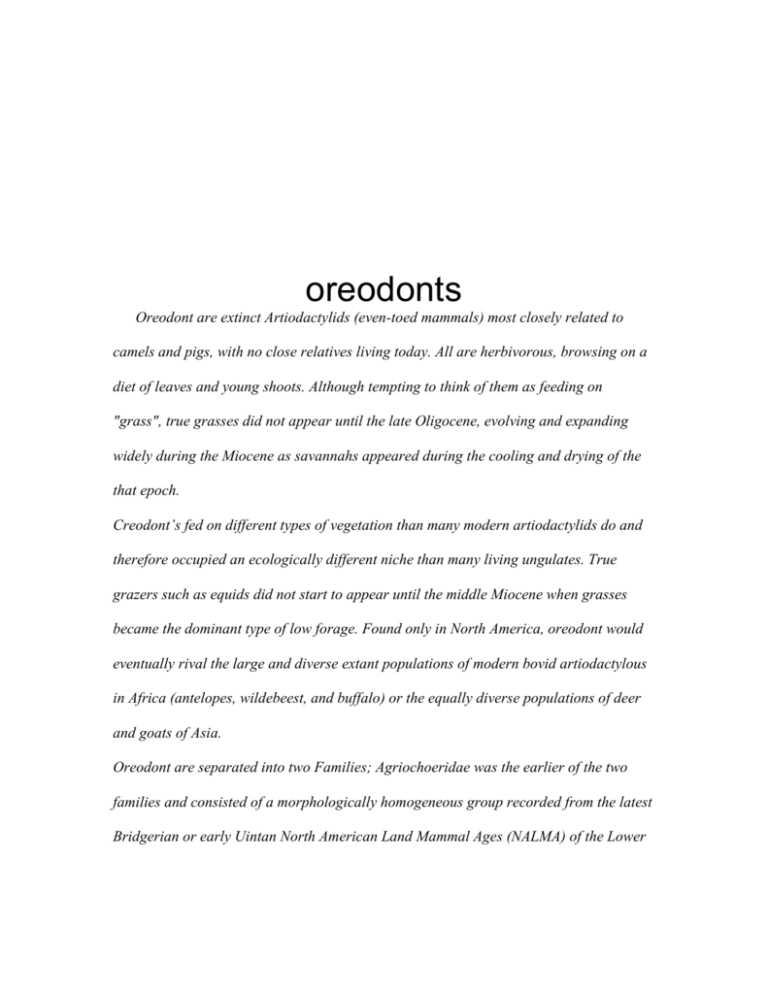
oreodonts Oreodont are extinct Artiodactylids (even-toed mammals) most closely related to camels and pigs, with no close relatives living today. All are herbivorous, browsing on a diet of leaves and young shoots. Although tempting to think of them as feeding on "grass", true grasses did not appear until the late Oligocene, evolving and expanding widely during the Miocene as savannahs appeared during the cooling and drying of the that epoch. Creodont’s fed on different types of vegetation than many modern artiodactylids do and therefore occupied an ecologically different niche than many living ungulates. True grazers such as equids did not start to appear until the middle Miocene when grasses became the dominant type of low forage. Found only in North America, oreodont would eventually rival the large and diverse extant populations of modern bovid artiodactylous in Africa (antelopes, wildebeest, and buffalo) or the equally diverse populations of deer and goats of Asia. Oreodont are separated into two Families; Agriochoeridae was the earlier of the two families and consisted of a morphologically homogeneous group recorded from the latest Bridgerian or early Uintan North American Land Mammal Ages (NALMA) of the Lower to Middle Eocene to early Arikareean NALMA of the late Oligocene. Although artiodactyls, all eight genera of agrichoerid oreodont ABSTRACT-Remains of an oreodont identified as Merychyus sp. cf. M. calaminthus have been recovered from non-marine strata of the Orocopia Mountains in Southern California. This is the first direct chronostratigraphic evidence as to the age of these deposits. Merychyus calaminthus occurs with faunas of late Arikareean age (early Miocene) in the Tick Canyon Formation of the Soledad Basin, California, and is related to oreodont that occur in late Arikareean faunas in the Great Plains and New Mexico. Inasmuch as the Orocopia specimen appears to come from about the middle of the nonmarine section there, the age of most, but not necessarily all, of these beds is early Miocene or younger. Formerly, The non marine strata of the Orocopia Mountains were correlated with the As reported by Crowell and Susuki (1959), Tertiary strata in the Orocopia Mountains, east of the Salton Sea in Southern California (Text-fig. 1), consist of the marine Maniobra Formation and unconformable superjacent non- marine strata. The early and middle Eocene age of the Maniobra (Crowell and Susuki, 1959) was modified to middle Eocene (Crowell, 1962) and the age of the no marine strata has Been given as Miocene? and Oligocene (?) in The same two works. age Of these unnamed non-marine rocks was assigned, reason- ably, on the basis of superposition, there being no direct chronostratigraphic evidence. Subsequently Crowell (1962) noted that in gross stratigraphy the non marine rocks of the We present new evidence as to the age of the non marine strata of the Orocopia mountain area and suggest that at least part of these are time-correlative with the Tick Canyon Formation in the Soledad Oreodonts survived from the late Eocene through the early Miocene and are extremely abundant in some formations. Regardless of their abundance, however, all but one member of the Agriochoeridae failed to survive past the Chadronian NALMA. Only the largest merydoidodontid oreodont, apparently better adapted to feeding on tougher vegetation, survived until the early Miocene. Then increased aridity and cooling favored the evolution of grasses, thus eliminating the last of this primitive browsing superfamily that failed to adapt to climatic conditions that favored the evolution of true grazers like the horse. If oreodont skulls from these three states alone were more thoroughly studied, the taxonomic diversity of Chadronian through Arikareean oreodonts would undoubtedly increase, and our understanding of a major mammalian component of the Cenozoic would be greater.
